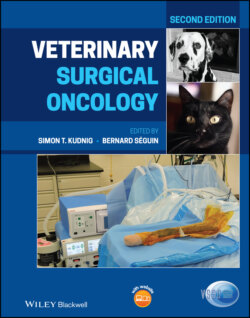Читать книгу Veterinary Surgical Oncology - Группа авторов - Страница 84
Vascular Interventional Oncology Techniques Stents
ОглавлениеVascular stents can be placed as a palliative means of recanalizing vascular obstructions that occur secondary to neoplasia (Mónaco et al. 2003; Novellas et al. 2009). After placement of the stent, clinical signs often resolve (Mónaco et al. 2003; Novellas et al. 2009). Malignancy is the cause of superior vena cava syndrome (obstruction of the superior vena cava preventing venous return) in 90% of human cases, and the placement of vascular stents has become the treatment of choice (Mónaco et al. 2003).
Budd–Chiari syndrome occurs when venous flow at the level of the hepatic veins and/or vena cava is obstructed (Cura et al. 2009; Xue et al. 2009). The success rate of stent placement in humans as manifested by alleviation of pleural effusion, ascites, and hepatomegaly has been reported to be up to 97% (Qiao et al. 2005; Xue et al. 2009). Three dogs undergoing stent placement to treat Budd–Chiari syndrome have been reported (Schlisksup et al. 2009). All dogs had confirmed or suspected neoplasia causing Budd–Chiari syndrome. A stent or stents were placed into the left hepatic vein and/or the caudal vena cava to relieve the obstruction. All dogs experienced relief of clinical signs, and survival time ranged from 7 to 20 months (Schlisksup et al. 2009).
